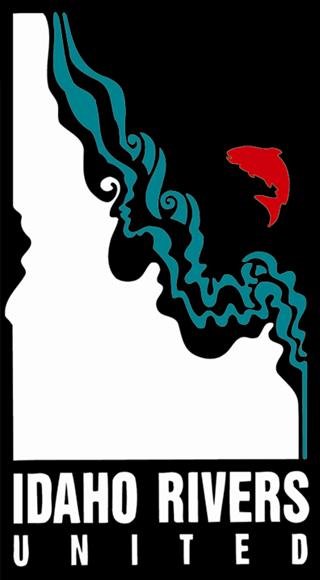Staying safe in high water Idaho rivers
Paddler on the NF Payette. Photo credit: Greg Stahl for IRU
While Idaho is known for its amazing rivers and big water possibilities, sometimes mother nature delivers a little more than we may be used to or expecting as we set off into swollen creeks and rivers. This spring we were lucky to have some late accumulation in the mountains and a prolonged cold cycle that has just begun to really let loose. This weather pattern certainly saved our snowpack and turned the mid-winter prospects of another low water year into a spring that many boaters dream of. While the high water excitement is hard to avoid, it has also been a sober reminder that with high water comes higher risk.
This spring, the Idaho boating community has already been met with tragedies on some of our most iconic stretches of rivers. The team at Idaho Rivers United wanted to share a few high water safety tips for you and your crew as the boating season continues to ramp up.
High water dramatically changes the nature of the river. Stretches that you may be very comfortable with at normal summer flows become an entirely different experience with increased flows. Some harder rapids may become washed out and easier while typically benign rapids can punch well above their typical weight class. There is no exact science for this - when in doubt get out and scout!
Always paddle within your comfort zone and have a dialed crew. It can be tempting to push our limits in the spring but be honest with yourself and your skillset. High water is usually not the time to explore new stretches of river that you or your paddling team are unfamiliar with.
Tighten up boat spacing. It can be easy to get separated and lose line of sight with the rest of your team. Often we want ample space between boats but keeping the rest of your crew close can dramatically shorten a swim and make sure that everyone is aware of any hazards or incidents as they arise.
Establish clear and direct signals to communicate with your team. There could be new wood, the need to catch an eddy on the fly, or simply give clear beta on what the high water line may be through a rapid. Before launching, spend a few minutes to make sure everyone is on the same page with hand signals and whistle communication.
As rivers swell, wood starts to move around and the banks of the river may be full of strainers and other hazards. Be sure you and you’re crew have a safety plan in mind and know how to deal with the potential of a swimmer and what your best rescue options may be.
Make sure your gear is high water ready. High spring flows are not the place for old worn out PFDs or a leaky dry suit. Swims can be longer and more powerful than we’re used to and we need our safety gear to be ready to do its job and give us the buffer we may need for an out of boat experience or rescue.
Rig to flip and dress for the swim. Even as temps start to rise, be sure that you’re dressing for the potential of a prolonged immersion into the water. You can always cool off intentionally but if you find yourself in the water or working a rescue you will be happy you put on your extra layer at the put-in.
This list is by no means exhaustive and we strongly encourage everyone to invest the time to take a swiftwater rescue course if you haven’t in the past. We are lucky to have many world class instructors in our state and the skills and knowledge you’ll learn can certainly come into play at high water or at any time you find yourself on one of our amazing stretches of rivers.
Stay safe out there everyone!


